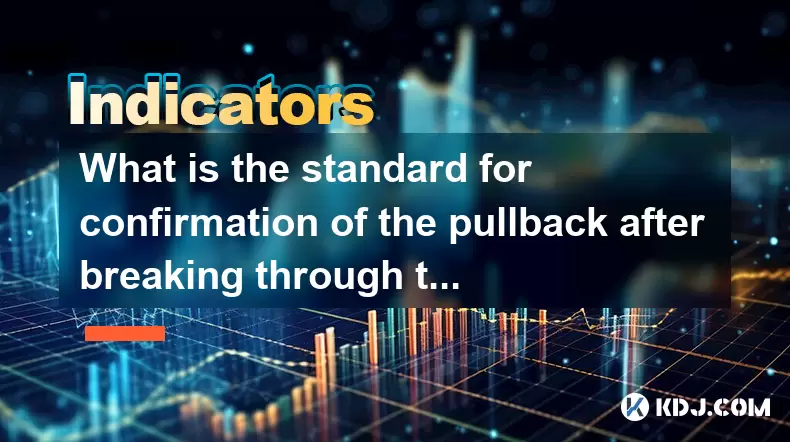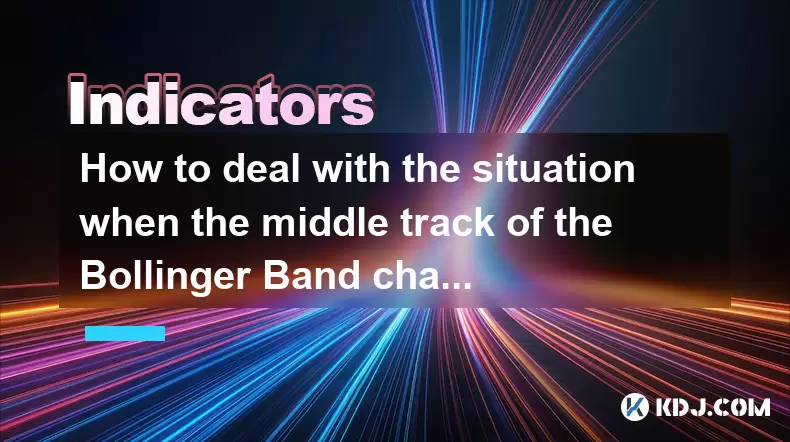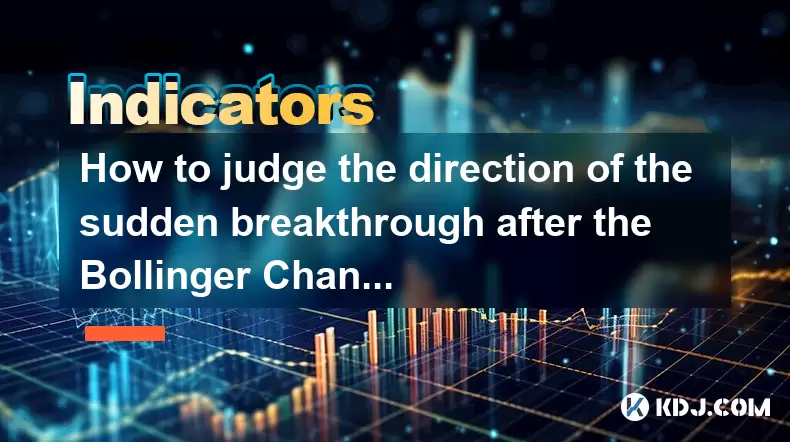-
 Bitcoin
Bitcoin $101,898.5005
-0.75% -
 Ethereum
Ethereum $2,258.1125
-1.07% -
 Tether USDt
Tether USDt $1.0004
0.01% -
 XRP
XRP $2.0178
-2.93% -
 BNB
BNB $624.0243
-1.53% -
 Solana
Solana $134.3298
-0.90% -
 USDC
USDC $0.9999
0.01% -
 TRON
TRON $0.2675
-2.05% -
 Dogecoin
Dogecoin $0.1538
-1.96% -
 Cardano
Cardano $0.5482
-1.11% -
 Hyperliquid
Hyperliquid $35.5636
5.45% -
 Bitcoin Cash
Bitcoin Cash $453.4902
-1.66% -
 Sui
Sui $2.5134
-2.97% -
 UNUS SED LEO
UNUS SED LEO $9.1292
1.77% -
 Chainlink
Chainlink $11.8457
-1.60% -
 Stellar
Stellar $0.2312
-2.73% -
 Avalanche
Avalanche $16.9721
0.29% -
 Toncoin
Toncoin $2.7549
-3.82% -
 Shiba Inu
Shiba Inu $0.0...01081
-1.10% -
 Litecoin
Litecoin $80.8250
-0.71% -
 Hedera
Hedera $0.1374
0.21% -
 Monero
Monero $305.4827
-2.36% -
 Ethena USDe
Ethena USDe $1.0006
0.00% -
 Dai
Dai $1.0000
-0.01% -
 Polkadot
Polkadot $3.2085
-3.12% -
 Bitget Token
Bitget Token $4.0845
-3.13% -
 Uniswap
Uniswap $6.3353
-1.63% -
 Pi
Pi $0.5085
-0.70% -
 Pepe
Pepe $0.0...08913
-3.82% -
 Aave
Aave $232.7090
-0.58%
How to use Vol indicator in a volatile market? How to read the signal of selling high and buying low?
Use the Volatility indicator to spot high and low volatility in crypto markets, helping you sell high during overbought conditions and buy low when oversold.
May 23, 2025 at 05:42 am

The Volatility (Vol) indicator is a crucial tool for traders navigating the often turbulent waters of the cryptocurrency market. In this article, we will explore how to effectively use the Vol indicator during periods of high market volatility, and how to interpret its signals to execute strategies for selling high and buying low.
Understanding the Volatility Indicator
The Volatility (Vol) indicator measures the rate at which the price of an asset increases or decreases for a set of returns. In the context of cryptocurrencies, this indicator helps traders understand the level of risk and potential price movement. A higher volatility indicates larger price swings, which can be both an opportunity and a risk for traders.
To use the Vol indicator effectively, it's important to understand its calculation and typical settings. The Vol indicator is often calculated using the standard deviation of price changes over a specific period. Common settings include a 10-day or 20-day period, but these can be adjusted based on the trader's strategy and the asset's behavior.
Setting Up the Vol Indicator in Your Trading Platform
Before you can use the Vol indicator, you need to set it up in your trading platform. Here's how you can do it in a popular trading platform like TradingView:
- Open TradingView and navigate to the chart of the cryptocurrency you want to analyze.
- Click on the 'Indicators' button at the top of the chart window.
- Search for 'Volatility' in the search bar.
- Select the Volatility indicator from the list of options.
- Adjust the settings as needed, such as the period over which the volatility is calculated.
Once set up, the Vol indicator will appear on your chart, typically as a line that oscillates based on the asset's price movements.
Interpreting Volatility Signals in a Volatile Market
In a volatile market, the Vol indicator can help you identify periods of high and low volatility. A rising Vol line indicates increasing volatility, which often precedes significant price movements. Conversely, a falling Vol line suggests decreasing volatility, which may indicate a period of consolidation or a potential trend reversal.
To use the Vol indicator effectively in a volatile market, focus on the following:
- Monitor the Vol line for spikes: Sudden increases in volatility can signal upcoming price movements. These spikes can be opportunities to enter or exit trades.
- Watch for divergences: If the price of the cryptocurrency is moving in one direction but the Vol line is moving in the opposite direction, it may signal a potential reversal.
- Use the Vol indicator in conjunction with other tools: Combine the Vol indicator with trend indicators like Moving Averages or momentum indicators like the Relative Strength Index (RSI) to confirm signals.
Selling High: Using the Vol Indicator to Identify Overbought Conditions
To sell high, you need to identify when a cryptocurrency is overbought and likely to experience a price correction. The Vol indicator can help you spot these conditions:
- Look for high volatility levels: When the Vol line reaches high levels, it often indicates that the market is overbought. This can be a signal to consider selling.
- Combine with other indicators: Use the Vol indicator alongside the RSI. If the RSI is above 70 and the Vol line is high, it strengthens the case for an overbought condition.
- Monitor price action: Look for bearish candlestick patterns or a break below key support levels, which can confirm the overbought signal provided by the Vol indicator.
Buying Low: Using the Vol Indicator to Identify Oversold Conditions
To buy low, you need to identify when a cryptocurrency is oversold and likely to experience a price rebound. The Vol indicator can help you spot these conditions:
- Look for low volatility levels: When the Vol line reaches low levels, it often indicates that the market is oversold. This can be a signal to consider buying.
- Combine with other indicators: Use the Vol indicator alongside the RSI. If the RSI is below 30 and the Vol line is low, it strengthens the case for an oversold condition.
- Monitor price action: Look for bullish candlestick patterns or a break above key resistance levels, which can confirm the oversold signal provided by the Vol indicator.
Practical Example: Using the Vol Indicator to Trade Bitcoin
Let's walk through a practical example of using the Vol indicator to trade Bitcoin in a volatile market:
- Set up the Vol indicator on a Bitcoin chart with a 20-day period.
- Observe the Vol line: Notice any significant spikes or drops in volatility.
- Identify an overbought condition: Suppose the Vol line spikes to a high level, and the RSI is above 70. This could indicate that Bitcoin is overbought.
- Look for bearish price action: If you see a bearish candlestick pattern forming, it may be a good time to sell high.
- Identify an oversold condition: Suppose the Vol line drops to a low level, and the RSI is below 30. This could indicate that Bitcoin is oversold.
- Look for bullish price action: If you see a bullish candlestick pattern forming, it may be a good time to buy low.
By following these steps, you can use the Vol indicator to make informed trading decisions in a volatile market.
Frequently Asked Questions
Q: Can the Vol indicator be used on all timeframes?
A: Yes, the Vol indicator can be used on various timeframes, from short-term intraday charts to longer-term weekly or monthly charts. However, the effectiveness of the indicator may vary depending on the timeframe and the asset's behavior.
Q: How often should I adjust the settings of the Vol indicator?
A: The settings of the Vol indicator should be adjusted based on your trading strategy and the asset's volatility. If you notice that the market conditions have changed significantly, you may need to adjust the period over which the volatility is calculated to better suit your trading needs.
Q: Is the Vol indicator suitable for all types of traders?
A: The Vol indicator can be useful for both short-term and long-term traders. However, it may be more beneficial for traders who are comfortable with higher levels of risk and are looking to capitalize on price movements in volatile markets.
Q: Can the Vol indicator be used alone, or should it always be combined with other indicators?
A: While the Vol indicator can provide valuable insights into market volatility, it is generally more effective when used in conjunction with other technical indicators. Combining the Vol indicator with trend indicators and momentum indicators can help confirm signals and improve the accuracy of your trading decisions.
Disclaimer:info@kdj.com
The information provided is not trading advice. kdj.com does not assume any responsibility for any investments made based on the information provided in this article. Cryptocurrencies are highly volatile and it is highly recommended that you invest with caution after thorough research!
If you believe that the content used on this website infringes your copyright, please contact us immediately (info@kdj.com) and we will delete it promptly.
- Cryptocurrencies, Coingecko, and Trending Tokens: What's Hot Now?
- 2025-06-23 23:05:12
- FUNToken: Decoding Past Trends and Getting Started in the Gaming Crypto Sphere
- 2025-06-23 22:25:12
- BTC Price Analysis: Navigating Volatility and the Quest for a New ATH
- 2025-06-23 22:25:12
- Genesis, Bitcoin Mining, and Air-Cooled Miners: A New Era?
- 2025-06-23 22:45:12
- Coinbase's Growth and Resilience: Navigating the Crypto Landscape
- 2025-06-23 22:45:12
- Bitcoin Options Market: Bullish Bets Amidst Geopolitical Jitters
- 2025-06-23 22:51:52
Related knowledge

Is it contradictory that the moving average system is arranged in a bullish pattern but the DMI shows a decline in trend strength?
Jun 23,2025 at 11:43pm
Understanding the Moving Average and DMI RelationshipIn cryptocurrency trading, technical analysis plays a crucial role in identifying potential trends and making informed decisions. Two of the most commonly used indicators are the Moving Average (MA) and the Directional Movement Index (DMI). While both tools aim to provide insight into market direction...

What is the significance of the gap formed by the gap opening not being filled within five days?
Jun 23,2025 at 09:42pm
Understanding Gaps in Cryptocurrency TradingIn the world of cryptocurrency trading, a gap refers to a situation where the price of an asset jumps from one level to another without any trading activity occurring between those two levels. This often happens over weekends or holidays when the market is closed, and significant news or events occur that impa...

What is the standard for confirmation of the pullback after breaking through the neckline with large volume?
Jun 23,2025 at 11:28pm
Understanding the Neckline in Technical AnalysisIn technical analysis, the neckline is a critical support or resistance level that appears in chart patterns such as head and shoulders, double tops, and double bottoms. It typically connects two or more lows (in the case of a head and shoulders top) or highs (in the case of a head and shoulders bottom). W...

How to deal with the situation when the middle track of the Bollinger Band changes from support to resistance?
Jun 23,2025 at 11:22pm
Understanding the Bollinger Band Middle TrackThe Bollinger Band is a widely used technical indicator in cryptocurrency trading. It consists of three lines: the upper band, the lower band, and the middle track, which is typically a 20-period simple moving average (SMA). Traders often rely on the middle track as a dynamic support or resistance level. Howe...

Does the second golden cross of MACD above the zero axis represent the continuation of strength?
Jun 23,2025 at 08:21pm
Understanding the MACD IndicatorThe Moving Average Convergence Divergence (MACD) is a widely used technical analysis tool in cryptocurrency trading. It consists of three main components: the MACD line, the signal line, and the histogram. The MACD line is calculated by subtracting the 26-period Exponential Moving Average (EMA) from the 12-period EMA. The...

How to judge the direction of the sudden breakthrough after the Bollinger Channel narrows to the extreme?
Jun 23,2025 at 11:00pm
Understanding the Bollinger Channel and Its Narrowing PatternThe Bollinger Channel is a widely used technical indicator in cryptocurrency trading, consisting of three bands: the middle band (a simple moving average), and two outer bands that represent standard deviations from the middle line. When the price consolidates for an extended period, the chann...

Is it contradictory that the moving average system is arranged in a bullish pattern but the DMI shows a decline in trend strength?
Jun 23,2025 at 11:43pm
Understanding the Moving Average and DMI RelationshipIn cryptocurrency trading, technical analysis plays a crucial role in identifying potential trends and making informed decisions. Two of the most commonly used indicators are the Moving Average (MA) and the Directional Movement Index (DMI). While both tools aim to provide insight into market direction...

What is the significance of the gap formed by the gap opening not being filled within five days?
Jun 23,2025 at 09:42pm
Understanding Gaps in Cryptocurrency TradingIn the world of cryptocurrency trading, a gap refers to a situation where the price of an asset jumps from one level to another without any trading activity occurring between those two levels. This often happens over weekends or holidays when the market is closed, and significant news or events occur that impa...

What is the standard for confirmation of the pullback after breaking through the neckline with large volume?
Jun 23,2025 at 11:28pm
Understanding the Neckline in Technical AnalysisIn technical analysis, the neckline is a critical support or resistance level that appears in chart patterns such as head and shoulders, double tops, and double bottoms. It typically connects two or more lows (in the case of a head and shoulders top) or highs (in the case of a head and shoulders bottom). W...

How to deal with the situation when the middle track of the Bollinger Band changes from support to resistance?
Jun 23,2025 at 11:22pm
Understanding the Bollinger Band Middle TrackThe Bollinger Band is a widely used technical indicator in cryptocurrency trading. It consists of three lines: the upper band, the lower band, and the middle track, which is typically a 20-period simple moving average (SMA). Traders often rely on the middle track as a dynamic support or resistance level. Howe...

Does the second golden cross of MACD above the zero axis represent the continuation of strength?
Jun 23,2025 at 08:21pm
Understanding the MACD IndicatorThe Moving Average Convergence Divergence (MACD) is a widely used technical analysis tool in cryptocurrency trading. It consists of three main components: the MACD line, the signal line, and the histogram. The MACD line is calculated by subtracting the 26-period Exponential Moving Average (EMA) from the 12-period EMA. The...

How to judge the direction of the sudden breakthrough after the Bollinger Channel narrows to the extreme?
Jun 23,2025 at 11:00pm
Understanding the Bollinger Channel and Its Narrowing PatternThe Bollinger Channel is a widely used technical indicator in cryptocurrency trading, consisting of three bands: the middle band (a simple moving average), and two outer bands that represent standard deviations from the middle line. When the price consolidates for an extended period, the chann...
See all articles
























































































